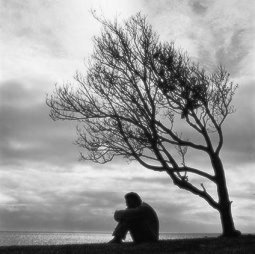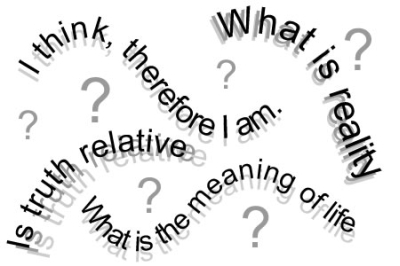ABSURD ab·surd
Definition: Wildly unreasonable, illogical, or inappropriate. Foolish; unreasonable. Opposed to reason. Ridiculous, silly. An unreasonable thing, act, or statement.
Synonyms: preposterous – ridiculous – nonsensical – ludicrous
THEATER of the ABSURD
-
The Theatre of the Absurd became a prominent movement in the 20th century(Roudane, 499).
-
Martin Esslin first used the term to describe the work of a group of playwrights in the 1950s and 60s.
-
Defined as theater that seeks to represent the absurdity of human existence in a meaningless universe by bizarre or fantastic means.
-
Absurd plays questioned the nature of human existence by presenting a world without logic or morals, and without the using conventional dramatic language, plot and narrative (Roudane, 499).
“What, they ask in fact, is reality? What is verifiable? What is the meaning of our existance? Can language itself still be used to communicate between human beings? Is there such a thing as character, personality, individuality?” (Esslin, 673)
First Known Use of THEATER OF THE ABSURD: 1961
Previously, theatre reflected “an accepted moral order” (Esslin, 6) with a clear view of right and wrong, and a belief in “evolution and progress” (Esslin, 6) which existed in society.. Plays fit within a framework, and a “rational view of life”. (Esslin, 14). The play had actions which lead to a definable end.
CONTEXT for THEATRE OF THE ABSURD
-
The decline of religion (Esslin, 6)
-
Discoveries about the human psyche (Esslin, 6)
-
Weapons of mass destruction, totalitarianism (Esslin, 6)
-
The sense of a loss of control over “rational human development” and the lack of a belief in “automatic progress” of society (Esslin, 6)
-
The lack of a “generally accepted and completely integrated world picture” (Esslin, 6)
-
Basically, the accepted framework of values and beliefs that previously existed no longer existed so playwrights didn’t feel the need to fit into dramatic conventions (Esslin, 6).
“Absurd is that which is devoid of purpose…Cut off from his religious,metaphysical and transcendental roots, man is lost; all his actions becomes senseless, absurd, useless…” – Ionesco (Esslin, 671)

CHARACTERISTICS
“The Theatre of the Absurd is the true theatre of our time.” – Martin Esslin, 1960. (Esslin, 6)
-
Influenced by philosophy and psychology (Esslin, 11)
-
A “bewildering experience, a veritable barrage of wildly irrational, often nonsensical goings-on that seem to go counter to all accepted standards of stage convention” (Esslin, 3)
-
No clear framework or logical motivations (Esslin, 4)
-
The action does not proceed logically. There are contradictions, and the end is not conclusive (Esslin, 14)
-
Shows the world as an incomprehensible place (Esslin, 5).
-
The audience is unable to ever understand the full meaning of the events, or understand the characters (Esslin, 5).
-
It is more difficult for the audience to emotionally identity with the characters they do not understand (Esslin, 5).
-
The time or the place of the play is not usually made clear (Esslin, 3).
-
Events occur without normal motivations, random, or by “the demented caprice of an unaccountable idiot fate” (Esslin, 3).
-
The dialogue can sometimes appear to counter what is happening onstage, for example characters can start reciting lists, or repeating themselves over and over, using stereotypes and clichés over and over (Esslin, 3).
-
Can include farce, and cabaret elements (Esslin, 3)
-
Gives expression to some issues of our time period, “meet some of the deepest needs and unexpected yearnings of the audience” (Esslin, 4).
-
Confronts the audience with a “grotesquely heightened picture of their own world: without faith, meaning and genuine freedom of will”(Esslin, 6) and “the senselessness of the human condition” (Esslin, 673).
-
Attempts to “externalize” what is happening inside the mind, the subconcious. (8)
-
A “revolutionary attitude” towards language. Attempts to break the limitations of conventional language, and show how ineffective language can be. (Esslin, 10) The “dissolution, devaluation, and relativisation of language”. (Esslin, 11) A rejection of language. (Esslin, 12)
-
A more complex version of reality, with no conclusive answers but not totally without meaning. ( Esslin 13, 14).
-
Includes allegories, and symbolic representations (Esslin, 15).
-
The audience is confronted with an “intellectual problem, a philosophical paradox” that they will try to solve even though there may be no solution (Esslin, 14).
“The Theatre of the Absurd is the most demanding, the most intellectual theatre” (Esslin, 14)
Notable contributors: Alfred Jarry, Guillame Apollinari,Antonin Artaud, Jean-Louis Barrault, Samuel Beckett, Arthur Adamov, Eugene Ionesco, Harold Pinter.
“The dramatic riddles of our time present no clear cut solutions. All they can show is that while the solutions have evaporated the riddle of our existence remains – complex, unfathomable, and paradoxical.” – Martin Esslin (Esslin, 15)
________________________________________________________________
Works Cited
Esslin, Martin. “The Theatre of the Absurd.” The Tulane Drama Review 4.4 (1960): 3-15. JSTOR. Web. 21 Mar. 2013.
Esslin, Martin. “The Absurdity of the Absurd.” The Kenyon Review 22.4.(1960): 670-673. JSTOR. Web. 21 Mar. 2013.
Roudané, Matthew. Drama Essentials: An Anthology of Plays. Boston, MA: Houghton Mifflin, 2009. Print.












